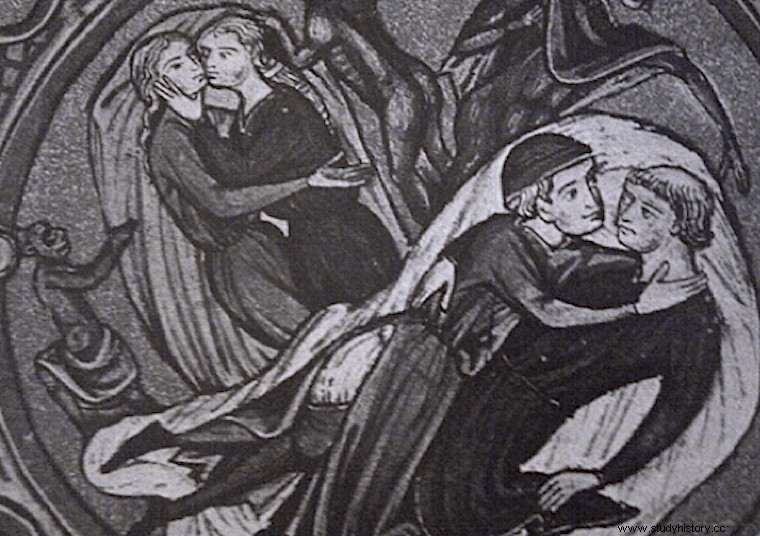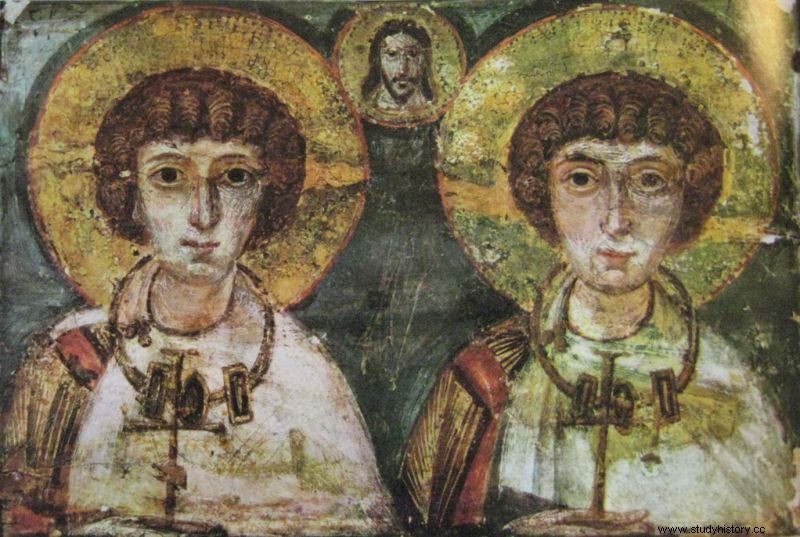On many occasions history gives us a reality check when we believe that today's society is responsible for the recognition of some rights or pioneer of certain social achievements, when the reality is that rights already acquired in the past are recovered and that the passage of time has made them fall into oblivion or, worse still, they have been duly "forgotten" by the interest of some. For example, the day of the working woman, already recognized in Sumeria, or civil marriages between people of the same sex, in this case men, during the Middle Ages -still a utopia in many countries in the XXI century-.

During the Middle Ages the term affrèrement was coined. , in France, and brotherment , in England, to refer to the civil union of two men. Through a legal contract, two men promised to live together and share «bread, wine and money «. And although the model of this new "family unit" was that of two brothers who inherited their parents' property and decided to continue living together, as they had done since they were children, sharing their possessions, the affrèrement/brotherment was also used by unrelated men. Like any other type of legal contract, it had to be sworn to and ratified before a "notary" and the presence of witnesses, usually friends of the contracting parties, was necessary. Under this legal figure, the possessions of both became joint property and, in the event of the death of one of the parties, the survivor became his legal heir.
It seems logical to think that single brothers, and with no intention of getting married, used this civil union, but also that homosexual couples used this kind of civil marriage to "legalize" their situation and almost normalize a once platonic or furtive relationship. . Unfortunately, and as has happened on too many occasions throughout history, there are no contracts of this type that are related to the union of two women.
Others, like the Yale University historian John Boswell in his book Same-sex unions in pre-modern Europe , go further and document records of Church ceremonies where two men were joined through the same rituals as heterosexual marriages.

Sergius and Bacchus (martyrs, friends and…)
During the research for the documentation of the book, Boswell managed to collect more than 60 texts, dated between the 8th and 16th centuries and distributed throughout the world, of Christian ceremonies for «the union between people of the same sex «. According to Boswell, the Church reframed the idea of marriage in the thirteenth century as an institution whose purpose was procreation. In this way, the door was closed to homosexual marriages and the scholars of the Church and the officials put to work the machinery of oblivion to justify this new approach... and make this type of marriage disappear from history.
Sources:Science Daily, The New York Times
